2288.60 12.18 0.54%
Japan: Nikkei 225 15919.58 60.58 0.38%
Stoxx Europe 600 324.49 3.96 1.24%
UK: FTSE 100 5979.64 56.11 0.95%
CURRENCIES7:54 AM EDT 6/15/2016
LAST(MID) CHANGE
Euro (EUR/USD) 1.1229 0.0022
Yen (USD/JPY) 106.21 0.11
Pound (GBP/USD) 1.4184 0.0070
Australia $ (AUD/USD) 0.7393 0.0035
Swiss Franc (USD/CHF) 0.9638 0.0006
WSJ Dollar Index 86.65 -0.17
GOVERNMENT BONDS7:53 AM EDT 6/15/2016
PRICE CHG YIELD
U.S. 10 Year -6/32 1.635
German 10 Year -5/32 0.016
Japan 10 Year 7/32 -0.190
FUTURES7:44 AM EDT 6/15/2016
LAST CHANGE % CHG
Crude Oil 48.10 -0.39 -0.80%
Brent Crude 50.83 -0.52 -1.01%
Gold 1284.8 -3.3 -0.26%
Silver 17.445 0.021 0.12%
E-mini DJIA 17612 40 0.23%
E-mini S&P 500 2069.25 3.25 0.16%
Miercoles 15/06/16 Anuncio del Fed
43 mensajes
• Página 2 de 3 • 1, 2, 3
Re: Miercoles 15/06/16 Anuncio del Fed
2290.06 13.64 0.60%
Japan: Nikkei 225 15919.58 60.58 0.38%
Stoxx Europe 600 324.48 3.95 1.23%
UK: FTSE 100 5980.49 56.96 0.96%
CURRENCIES8:18 AM EDT 6/15/2016
LAST(MID) CHANGE
Euro (EUR/USD) 1.1234 0.0027
Yen (USD/JPY) 106.21 0.10
Pound (GBP/USD) 1.4196 0.0082
Australia $ (AUD/USD) 0.7398 0.0040
Swiss Franc (USD/CHF) 0.9628 -0.0004
WSJ Dollar Index 86.61 -0.21
GOVERNMENT BONDS8:18 AM EDT 6/15/2016
PRICE CHG YIELD
U.S. 10 Year -5/32 1.631
German 10 Year -5/32 0.015
Japan 10 Year 7/32 -0.190
FUTURES8:08 AM EDT 6/15/2016
LAST CHANGE % CHG
Crude Oil 47.99 -0.50 -1.03%
Brent Crude 50.71 -0.64 -1.25%
Gold 1283.2 -4.9 -0.38%
Silver 17.420 -0.004 -0.02%
E-mini DJIA 17619 47 0.27%
E-mini S&P 500
Japan: Nikkei 225 15919.58 60.58 0.38%
Stoxx Europe 600 324.48 3.95 1.23%
UK: FTSE 100 5980.49 56.96 0.96%
CURRENCIES8:18 AM EDT 6/15/2016
LAST(MID) CHANGE
Euro (EUR/USD) 1.1234 0.0027
Yen (USD/JPY) 106.21 0.10
Pound (GBP/USD) 1.4196 0.0082
Australia $ (AUD/USD) 0.7398 0.0040
Swiss Franc (USD/CHF) 0.9628 -0.0004
WSJ Dollar Index 86.61 -0.21
GOVERNMENT BONDS8:18 AM EDT 6/15/2016
PRICE CHG YIELD
U.S. 10 Year -5/32 1.631
German 10 Year -5/32 0.015
Japan 10 Year 7/32 -0.190
FUTURES8:08 AM EDT 6/15/2016
LAST CHANGE % CHG
Crude Oil 47.99 -0.50 -1.03%
Brent Crude 50.71 -0.64 -1.25%
Gold 1283.2 -4.9 -0.38%
Silver 17.420 -0.004 -0.02%
E-mini DJIA 17619 47 0.27%
E-mini S&P 500
- admin
- Site Admin
- Mensajes: 165587
- Registrado: Mié Abr 21, 2010 9:02 pm
Re: Miercoles 15/06/16 Anuncio del Fed
Los precios de los productores aumentan 0.4% cuando se esperaba 0.3%
- admin
- Site Admin
- Mensajes: 165587
- Registrado: Mié Abr 21, 2010 9:02 pm
Re: Miercoles 15/06/16 Anuncio del Fed
Los gráficos del día, 
.

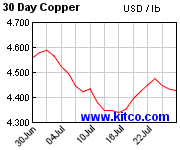
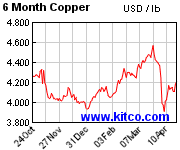
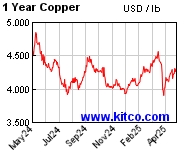
.

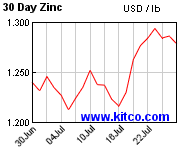
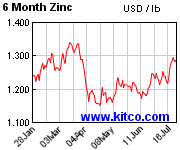
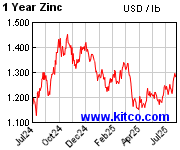
.

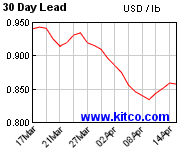
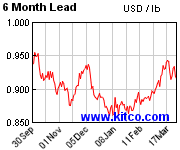
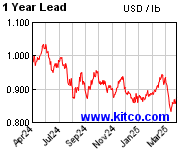
.
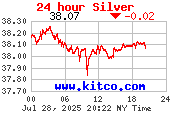
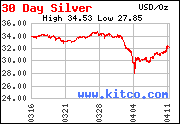
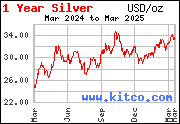
.
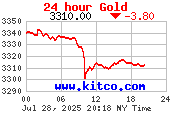
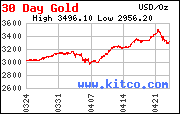
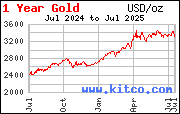
.
.




.




.




.



.



.
- Comodoro
- Mensajes: 980
- Registrado: Jue May 06, 2010 8:24 am
- Ubicación: LIMA
Re: Miercoles 15/06/16 Anuncio del Fed
17717.01 42.19 0.24%
Nasdaq 4854.69 11.14 0.23%
S&P 500 2080.91 5.59 0.27%
Russell 2000 1150.07 2.25 0.20%
Global Dow 2293.41 16.99 0.75%
Japan: Nikkei 225 15919.58 60.58 0.38%
Stoxx Europe 600 324.43 3.90 1.22%
UK: FTSE 100 5982.45 58.92 0.99%
CURRENCIES9:54 AM EDT 6/15/2016
LAST(MID) CHANGE
Euro (EUR/USD) 1.1229 0.0022
Yen (USD/JPY) 105.99 -0.12
Pound (GBP/USD) 1.4185 0.0071
Australia $ (AUD/USD) 0.7399 0.0041
Swiss Franc (USD/CHF) 0.9636 0.0004
WSJ Dollar Index 86.62 -0.20
GOVERNMENT BONDS9:54 AM EDT 6/15/2016
PRICE CHG YIELD
U.S. 10 Year 0/32 1.614
German 10 Year 1/32 -0.002
Japan 10 Year 7/32 -0.190
FUTURES9:44 AM EDT 6/15/2016
LAST CHANGE % CHG
Crude Oil 47.70 -0.79 -1.63%
Brent Crude 50.44 -0.91 -1.77%
Gold 1286.0 -2.1 -0.16%
Silver 17.480 0.056 0.32%
E-mini DJIA 17619 47 0.27%
E-mini S&P 500 2071.50 5.50 0.27%
Nasdaq 4854.69 11.14 0.23%
S&P 500 2080.91 5.59 0.27%
Russell 2000 1150.07 2.25 0.20%
Global Dow 2293.41 16.99 0.75%
Japan: Nikkei 225 15919.58 60.58 0.38%
Stoxx Europe 600 324.43 3.90 1.22%
UK: FTSE 100 5982.45 58.92 0.99%
CURRENCIES9:54 AM EDT 6/15/2016
LAST(MID) CHANGE
Euro (EUR/USD) 1.1229 0.0022
Yen (USD/JPY) 105.99 -0.12
Pound (GBP/USD) 1.4185 0.0071
Australia $ (AUD/USD) 0.7399 0.0041
Swiss Franc (USD/CHF) 0.9636 0.0004
WSJ Dollar Index 86.62 -0.20
GOVERNMENT BONDS9:54 AM EDT 6/15/2016
PRICE CHG YIELD
U.S. 10 Year 0/32 1.614
German 10 Year 1/32 -0.002
Japan 10 Year 7/32 -0.190
FUTURES9:44 AM EDT 6/15/2016
LAST CHANGE % CHG
Crude Oil 47.70 -0.79 -1.63%
Brent Crude 50.44 -0.91 -1.77%
Gold 1286.0 -2.1 -0.16%
Silver 17.480 0.056 0.32%
E-mini DJIA 17619 47 0.27%
E-mini S&P 500 2071.50 5.50 0.27%
- admin
- Site Admin
- Mensajes: 165587
- Registrado: Mié Abr 21, 2010 9:02 pm
Re: Miercoles 15/06/16 Anuncio del Fed
Investors Look for Clues on Path of Fed Interest-Rate Rises
Federal Reserve officials are widely expected to leave short-term interest rates unchanged at their meeting this week, following a dismal May jobs report. The Fed’s read on the economy and the risks it faces may shed light on whether officials are open to a rate increase in July or want to wait for more data. The central bank releases its latest policy statement and economic and interest-rate projections at 2 p.m. EDT Wednesday. Chairwoman Janet Yellen is scheduled to hold a news conference at 2:30 p.m. Here are five things to watch:
The Domestic Economy
Officials will likely modify their assessment of the employment outlook in their policy statement Wednesday, acknowledging the sharp hiring slowdown in May that Ms. Yellen dubbed “concerning” in her June 6 speech. Other labor-market data has been mixed: New jobless claims remain at historic lows, but the hiring rate slowed in April. On the other hand, the Fed could upgrade its assessment of economic growth amid signs of stronger demand.
Advertisement
The Brexit Vote
The June 23 British referendum on whether to leave the European Union “could have significant economic repercussions,” Ms. Yellen warned last week. With the vote a little more than a week away, and the latest polls showing growing support for a so-called Brexit, the chairwoman is certain to field questions during her postmeeting press conference about her view of the risks to the U.S. economy.
Inflation Expectations
Fed officials have grown increasingly wary of a slide in inflation expectations, which they could note in their policy statement Wednesday. Inflation has now undershot the Fed’s 2% goal for four years. If expectations are moving lower, Ms. Yellen said last week, that could raise doubts about whether inflation will rise to 2% as quickly as she expects.
Shifting Dots
The Fed also releases fresh projections Wednesday detailing where officials see the economy and interest rates heading over the next few years. Fed officials are grappling with how high their benchmark federal-funds rate will go, given the apparently low natural rate of interest, the inflation-adjusted rate that balances investment and saving. The so-called dot plot will show how those long-run estimates of the fed-funds rate have shifted since March.
Balance of Risks
It now has been six months since officials have included an assessment in their statement of the balance of risks to the outlook for the U.S. economy. Though officials have acknowledged global risks have receded, they have new worries in the latest jobs numbers. Leaving the language unchanged would suggest officials are still in wait-and-see mode, but want to preserve their options.
Write to Kate Davidson at kate.davidson@wsj.com
Federal Reserve officials are widely expected to leave short-term interest rates unchanged at their meeting this week, following a dismal May jobs report. The Fed’s read on the economy and the risks it faces may shed light on whether officials are open to a rate increase in July or want to wait for more data. The central bank releases its latest policy statement and economic and interest-rate projections at 2 p.m. EDT Wednesday. Chairwoman Janet Yellen is scheduled to hold a news conference at 2:30 p.m. Here are five things to watch:
The Domestic Economy
Officials will likely modify their assessment of the employment outlook in their policy statement Wednesday, acknowledging the sharp hiring slowdown in May that Ms. Yellen dubbed “concerning” in her June 6 speech. Other labor-market data has been mixed: New jobless claims remain at historic lows, but the hiring rate slowed in April. On the other hand, the Fed could upgrade its assessment of economic growth amid signs of stronger demand.
Advertisement
The Brexit Vote
The June 23 British referendum on whether to leave the European Union “could have significant economic repercussions,” Ms. Yellen warned last week. With the vote a little more than a week away, and the latest polls showing growing support for a so-called Brexit, the chairwoman is certain to field questions during her postmeeting press conference about her view of the risks to the U.S. economy.
Inflation Expectations
Fed officials have grown increasingly wary of a slide in inflation expectations, which they could note in their policy statement Wednesday. Inflation has now undershot the Fed’s 2% goal for four years. If expectations are moving lower, Ms. Yellen said last week, that could raise doubts about whether inflation will rise to 2% as quickly as she expects.
Shifting Dots
The Fed also releases fresh projections Wednesday detailing where officials see the economy and interest rates heading over the next few years. Fed officials are grappling with how high their benchmark federal-funds rate will go, given the apparently low natural rate of interest, the inflation-adjusted rate that balances investment and saving. The so-called dot plot will show how those long-run estimates of the fed-funds rate have shifted since March.
Balance of Risks
It now has been six months since officials have included an assessment in their statement of the balance of risks to the outlook for the U.S. economy. Though officials have acknowledged global risks have receded, they have new worries in the latest jobs numbers. Leaving the language unchanged would suggest officials are still in wait-and-see mode, but want to preserve their options.
Write to Kate Davidson at kate.davidson@wsj.com
- admin
- Site Admin
- Mensajes: 165587
- Registrado: Mié Abr 21, 2010 9:02 pm
Re: Miercoles 15/06/16 Anuncio del Fed
17725.26 50.44 0.29%
Nasdaq 4852.31 8.76 0.18%
S&P 500 2081.11 5.79 0.28%
Russell 2000 1152.59 4.77 0.42%
Global Dow 2294.80 18.38 0.81%
Japan: Nikkei 225 15919.58 60.58 0.38%
Stoxx Europe 600 325.02 4.49 1.40%
UK: FTSE 100 6002.70 79.17 1.34%
CURRENCIES10:26 AM EDT 6/15/2016
LAST(MID) CHANGE
Euro (EUR/USD) 1.1236 0.0029
Yen (USD/JPY) 105.99 -0.12
Pound (GBP/USD) 1.4179 0.0065
Australia $ (AUD/USD) 0.7403 0.0045
Swiss Franc (USD/CHF) 0.9622 -0.0010
WSJ Dollar Index 86.61 -0.21
GOVERNMENT BONDS10:26 AM EDT 6/15/2016
PRICE CHG YIELD
U.S. 10 Year 2/32 1.606
German 10 Year 1/32 -0.004
Japan 10 Year 7/32 -0.190
FUTURES10:16 AM EDT 6/15/2016
LAST CHANGE % CHG
Crude Oil 47.89 -0.60 -1.24%
Brent Crude 50.53 -0.82 -1.60%
Gold 1285.0 -3.1 -0.24%
Silver 17.485 0.061 0.35%
E-mini DJIA 17651 79 0.45%
E-mini S&P 500 2075.00 9.00 0.44%
Nasdaq 4852.31 8.76 0.18%
S&P 500 2081.11 5.79 0.28%
Russell 2000 1152.59 4.77 0.42%
Global Dow 2294.80 18.38 0.81%
Japan: Nikkei 225 15919.58 60.58 0.38%
Stoxx Europe 600 325.02 4.49 1.40%
UK: FTSE 100 6002.70 79.17 1.34%
CURRENCIES10:26 AM EDT 6/15/2016
LAST(MID) CHANGE
Euro (EUR/USD) 1.1236 0.0029
Yen (USD/JPY) 105.99 -0.12
Pound (GBP/USD) 1.4179 0.0065
Australia $ (AUD/USD) 0.7403 0.0045
Swiss Franc (USD/CHF) 0.9622 -0.0010
WSJ Dollar Index 86.61 -0.21
GOVERNMENT BONDS10:26 AM EDT 6/15/2016
PRICE CHG YIELD
U.S. 10 Year 2/32 1.606
German 10 Year 1/32 -0.004
Japan 10 Year 7/32 -0.190
FUTURES10:16 AM EDT 6/15/2016
LAST CHANGE % CHG
Crude Oil 47.89 -0.60 -1.24%
Brent Crude 50.53 -0.82 -1.60%
Gold 1285.0 -3.1 -0.24%
Silver 17.485 0.061 0.35%
E-mini DJIA 17651 79 0.45%
E-mini S&P 500 2075.00 9.00 0.44%
- admin
- Site Admin
- Mensajes: 165587
- Registrado: Mié Abr 21, 2010 9:02 pm
Re: Miercoles 15/06/16 Anuncio del Fed
Producción industrial en EEUU cae 0,4 pct en mayo y manufactura baja
WASHINGTON (Reuters) - La producción industrial en Estados Unidos cayó más a lo previsto en mayo por un declive en las actividades de servicios básicos y de la manufactura automotriz, dijo el miércoles la Reserva Federal.
La producción industrial bajó un 0,4 por ciento el mes pasado tras un alza revisada a la baja de 0,6 por ciento en abril.
Economistas consultados en un sondeo de Reuters proyectaban que la producción industrial bajara un 0,2 por ciento el mes pasado. El sector industrial medido por el banco central estadounidense abarca las manufacturas, la minería y los servicios de electricidad y gas.
En tanto, el porcentaje de capacidad industrial en uso bajó en 0,4 punto porcentual en mayo, a 74,9 por ciento, frente a un 75,3 en abril.
(Reporte de Lindsay Dunsmuir. Editado en español por Patricio Abusleme)
WASHINGTON (Reuters) - La producción industrial en Estados Unidos cayó más a lo previsto en mayo por un declive en las actividades de servicios básicos y de la manufactura automotriz, dijo el miércoles la Reserva Federal.
La producción industrial bajó un 0,4 por ciento el mes pasado tras un alza revisada a la baja de 0,6 por ciento en abril.
Economistas consultados en un sondeo de Reuters proyectaban que la producción industrial bajara un 0,2 por ciento el mes pasado. El sector industrial medido por el banco central estadounidense abarca las manufacturas, la minería y los servicios de electricidad y gas.
En tanto, el porcentaje de capacidad industrial en uso bajó en 0,4 punto porcentual en mayo, a 74,9 por ciento, frente a un 75,3 en abril.
(Reporte de Lindsay Dunsmuir. Editado en español por Patricio Abusleme)
- admin
- Site Admin
- Mensajes: 165587
- Registrado: Mié Abr 21, 2010 9:02 pm
Re: Miercoles 15/06/16 Anuncio del Fed
17709.23 34.41 0.19%
Nasdaq 4858.78 15.23 0.31%
S&P 500 2080.17 4.85 0.23%
Russell 2000 1157.33 9.51 0.83%
Global Dow 2292.94 16.52 0.73%
Japan: Nikkei 225 15919.58 60.58 0.38%
Stoxx Europe 600 323.63 3.10 0.97%
UK: FTSE 100 5966.80 43.27 0.73%
CURRENCIES12:37 PM EDT 6/15/2016
LAST(MID) CHANGE
Euro (EUR/USD) 1.1240 0.0033
Yen (USD/JPY) 105.92 -0.19
Pound (GBP/USD) 1.4170 0.0056
Australia $ (AUD/USD) 0.7400 0.0042
Swiss Franc (USD/CHF) 0.9651 0.0019
WSJ Dollar Index 86.59 -0.23
GOVERNMENT BONDS12:37 PM EDT 6/15/2016
PRICE CHG YIELD
U.S. 10 Year 6/32 1.594
German 10 Year 2/32 -0.008
Japan 10 Year 7/32 -0.190
FUTURES12:27 PM EDT 6/15/2016
LAST CHANGE % CHG
Crude Oil 48.08 -0.41 -0.85%
Brent Crude 50.66 -0.69 -1.34%
Gold 1286.4 -1.7 -0.13%
Silver 17.460 0.036 0.21%
E-mini DJIA 17622 50 0.28%
E-mini S&P 500 2072.00
Nasdaq 4858.78 15.23 0.31%
S&P 500 2080.17 4.85 0.23%
Russell 2000 1157.33 9.51 0.83%
Global Dow 2292.94 16.52 0.73%
Japan: Nikkei 225 15919.58 60.58 0.38%
Stoxx Europe 600 323.63 3.10 0.97%
UK: FTSE 100 5966.80 43.27 0.73%
CURRENCIES12:37 PM EDT 6/15/2016
LAST(MID) CHANGE
Euro (EUR/USD) 1.1240 0.0033
Yen (USD/JPY) 105.92 -0.19
Pound (GBP/USD) 1.4170 0.0056
Australia $ (AUD/USD) 0.7400 0.0042
Swiss Franc (USD/CHF) 0.9651 0.0019
WSJ Dollar Index 86.59 -0.23
GOVERNMENT BONDS12:37 PM EDT 6/15/2016
PRICE CHG YIELD
U.S. 10 Year 6/32 1.594
German 10 Year 2/32 -0.008
Japan 10 Year 7/32 -0.190
FUTURES12:27 PM EDT 6/15/2016
LAST CHANGE % CHG
Crude Oil 48.08 -0.41 -0.85%
Brent Crude 50.66 -0.69 -1.34%
Gold 1286.4 -1.7 -0.13%
Silver 17.460 0.036 0.21%
E-mini DJIA 17622 50 0.28%
E-mini S&P 500 2072.00
- admin
- Site Admin
- Mensajes: 165587
- Registrado: Mié Abr 21, 2010 9:02 pm
Re: Miercoles 15/06/16 Anuncio del Fed
17716.94 42.12 0.24%
Nasdaq 4859.44 15.89 0.33%
S&P 500 2081.21 5.89 0.28%
Russell 2000 1156.02 8.20 0.71%
Global Dow 2293.07 16.65 0.73%
Japan: Nikkei 225 15919.58 60.58 0.38%
Stoxx Europe 600 323.63 3.10 0.97%
UK: FTSE 100 5966.80 43.27 0.73%
CURRENCIES1:41 PM EDT 6/15/2016
LAST(MID) CHANGE
Euro (EUR/USD) 1.1240 0.0033
Yen (USD/JPY) 105.95 -0.16
Pound (GBP/USD) 1.4167 0.0053
Australia $ (AUD/USD) 0.7406 0.0048
Swiss Franc (USD/CHF) 0.9647 0.0015
WSJ Dollar Index 86.60 -0.22
GOVERNMENT BONDS1:39 PM EDT 6/15/2016
PRICE CHG YIELD
U.S. 10 Year 3/32 1.605
German 10 Year 2/32 -0.008
Japan 10 Year 7/32 -0.190
FUTURES1:31 PM EDT 6/15/2016
LAST CHANGE % CHG
Crude Oil 48.22 -0.27 -0.56%
Brent Crude 50.88 -0.47 -0.92%
Gold 1288.1 0.0 0.00%
Silver 17.495 0.071 0.41%
E-mini DJIA 17627 55 0.31%
E-mini S&P 500
Nasdaq 4859.44 15.89 0.33%
S&P 500 2081.21 5.89 0.28%
Russell 2000 1156.02 8.20 0.71%
Global Dow 2293.07 16.65 0.73%
Japan: Nikkei 225 15919.58 60.58 0.38%
Stoxx Europe 600 323.63 3.10 0.97%
UK: FTSE 100 5966.80 43.27 0.73%
CURRENCIES1:41 PM EDT 6/15/2016
LAST(MID) CHANGE
Euro (EUR/USD) 1.1240 0.0033
Yen (USD/JPY) 105.95 -0.16
Pound (GBP/USD) 1.4167 0.0053
Australia $ (AUD/USD) 0.7406 0.0048
Swiss Franc (USD/CHF) 0.9647 0.0015
WSJ Dollar Index 86.60 -0.22
GOVERNMENT BONDS1:39 PM EDT 6/15/2016
PRICE CHG YIELD
U.S. 10 Year 3/32 1.605
German 10 Year 2/32 -0.008
Japan 10 Year 7/32 -0.190
FUTURES1:31 PM EDT 6/15/2016
LAST CHANGE % CHG
Crude Oil 48.22 -0.27 -0.56%
Brent Crude 50.88 -0.47 -0.92%
Gold 1288.1 0.0 0.00%
Silver 17.495 0.071 0.41%
E-mini DJIA 17627 55 0.31%
E-mini S&P 500
- admin
- Site Admin
- Mensajes: 165587
- Registrado: Mié Abr 21, 2010 9:02 pm
Re: Miercoles 15/06/16 Anuncio del Fed
RESUMEN- Caída en producción automotriz pesa sobre manufacturas EEUU; inflación permanece contenida
Por Lucia Mutikani
WASHINGTON (Reuters) - La producción manufacturera en Estados Unidos cayó en mayo debido a que la fabricación de vehículos motorizados y piezas registró su mayor baja en casi dos años y medio, lo que sugiere una debilidad sostenida en el sector, pese a que la economía en general parece estar cobrando impulso.
La debilidad de las manufacturas y la inflación benigna, junto a una fuerte desaceleración en la creación de empleos el mes pasado, probablemente llevará a la Reserva Federal a dejar las tasas de interés sin cambios al terminar una reunión de política monetaria de dos días a las 1800 GMT.
"La decepcionante producción manufacturera apunta a una debilidad continua en este segmento de la economía y probablemente seguirá siendo una fuente de preocupación en la Fed", declaró Millan Mulraine, economista de TD Securities en Nueva York.
La producción manufacturera cayó un 0,4 por ciento el mes pasado tras subir un 0,2 por ciento en abril, dijo la Fed. Las manufacturas, que responden por un 12 por ciento de la economía de Estados Unidos, enfrentan los efectos persistentes de la fortaleza del dólar y de la lenta demanda desde el exterior.
Las fábricas también se han visto afectadas por fuertes recortes de gastos en proyectos en el sector energético ante los precios más bajos del crudo, además de los esfuerzos por parte de los negocios para reducir una sobreacumulación de inventarios.
La debilidad en las manufacturas contrasta fuertemente con recientes datos razonablemente sólidos de ventas minoristas y de viviendas, que sugieren que la economía recuperó impulso después de que el crecimiento se desaceleró a una tasa anualizada de 0,8 por ciento en el primer trimestre.
Sin embargo, hay señales de que lo peor para el sector manufacturero ya pasó. En otro reporte, la Fed de Nueva York dijo que su índice Empire State sobre condiciones para los negocios subió 15 puntos, a 6,0, en junio debido a que los nuevos pedidos y envíos también pasaron a territorio positivo.
"El tono del sondeo Empire State sugiere que estamos pasando la reciente debilidad en el sector manufacturero", declaró Daniel Silver, economista de JPMorgan en Nueva York.
Los mercados financieros estadounidenses no reaccionaron mayormente a los datos, dado que los inversores esperaban el resultado de la reunión de política monetaria de la Fed. Los precios de los bonos del Tesoro de Estados Unidos subieron levemente, mientras que el índice dólar cayó frente a una cesta de monedas y las acciones de Wall Street subían.
En un tercer reporte, el Departamento del Trabajo dijo que el índice de precios al productor para demanda final se elevó un 0,4 por ciento el mes pasado gracias a un incremento de los costos de la energía y después de avanzar un 0,2 por ciento en abril.
(Editado en español por Patricio Abusleme)
Por Lucia Mutikani
WASHINGTON (Reuters) - La producción manufacturera en Estados Unidos cayó en mayo debido a que la fabricación de vehículos motorizados y piezas registró su mayor baja en casi dos años y medio, lo que sugiere una debilidad sostenida en el sector, pese a que la economía en general parece estar cobrando impulso.
La debilidad de las manufacturas y la inflación benigna, junto a una fuerte desaceleración en la creación de empleos el mes pasado, probablemente llevará a la Reserva Federal a dejar las tasas de interés sin cambios al terminar una reunión de política monetaria de dos días a las 1800 GMT.
"La decepcionante producción manufacturera apunta a una debilidad continua en este segmento de la economía y probablemente seguirá siendo una fuente de preocupación en la Fed", declaró Millan Mulraine, economista de TD Securities en Nueva York.
La producción manufacturera cayó un 0,4 por ciento el mes pasado tras subir un 0,2 por ciento en abril, dijo la Fed. Las manufacturas, que responden por un 12 por ciento de la economía de Estados Unidos, enfrentan los efectos persistentes de la fortaleza del dólar y de la lenta demanda desde el exterior.
Las fábricas también se han visto afectadas por fuertes recortes de gastos en proyectos en el sector energético ante los precios más bajos del crudo, además de los esfuerzos por parte de los negocios para reducir una sobreacumulación de inventarios.
La debilidad en las manufacturas contrasta fuertemente con recientes datos razonablemente sólidos de ventas minoristas y de viviendas, que sugieren que la economía recuperó impulso después de que el crecimiento se desaceleró a una tasa anualizada de 0,8 por ciento en el primer trimestre.
Sin embargo, hay señales de que lo peor para el sector manufacturero ya pasó. En otro reporte, la Fed de Nueva York dijo que su índice Empire State sobre condiciones para los negocios subió 15 puntos, a 6,0, en junio debido a que los nuevos pedidos y envíos también pasaron a territorio positivo.
"El tono del sondeo Empire State sugiere que estamos pasando la reciente debilidad en el sector manufacturero", declaró Daniel Silver, economista de JPMorgan en Nueva York.
Los mercados financieros estadounidenses no reaccionaron mayormente a los datos, dado que los inversores esperaban el resultado de la reunión de política monetaria de la Fed. Los precios de los bonos del Tesoro de Estados Unidos subieron levemente, mientras que el índice dólar cayó frente a una cesta de monedas y las acciones de Wall Street subían.
En un tercer reporte, el Departamento del Trabajo dijo que el índice de precios al productor para demanda final se elevó un 0,4 por ciento el mes pasado gracias a un incremento de los costos de la energía y después de avanzar un 0,2 por ciento en abril.
(Editado en español por Patricio Abusleme)
- admin
- Site Admin
- Mensajes: 165587
- Registrado: Mié Abr 21, 2010 9:02 pm
Re: Miercoles 15/06/16 Anuncio del Fed
El PBI creció en marzo 3,72%, menos de lo que se esperaba
El producto bruto interno (PBI) del Perú creció 2,47% en el mes de abril, el nivel más bajo del año y de los últimos doce meses, según informó el jefe del Instituto Nacional de Estadística e Informática (INEI), Anibal Sánchez.
En abril, el PBI del sector pesquero cayó 77,1%, con lo cual en el año acumula una disminución de 40,83%, una pérdida que determinó también un menor avance del sector industrial básico y que la cifra promedio del PBI nacional no sea muy alta.
El PBI manufacturero cayó 13,76% por la menor fabricación de harina de pescado y azúcar. La manufactura no logra salir, así, de la recesión que la afecta desde el año pasado.
El PBI minero, en cambio, sigue creciendo a tasas aceleradas como resultado de la apertura de nuevas minas. En abril, el INEI indicó que se creció 27,79%, con lo que Minería e Hidrocarburos aumentaró 22,82%.
El sector agropecuario se expandió 2,69%, Electricidad y Agua lo hizo en 9,16%% y Construcción se mantuvo en zona positiva con un alza de 1,36%. En el campo del Comercio el desempeño fue positivo y se creció en 3,11%.
Los servicios también experimentaron aumentos importantes: Transporte y Almacenamiento experimentó un ascenso de 3,4%, Alojamiento y Restaurantes de 2,21%, Telecomunicaciones de 9,75%, Financiero y Seguros 6,56%, Servicios prestados a empresas 1,98%, Administración pública 4,71% y Otros Servicios 4,22%.
Acumulada
El PBI del Perú acumula un crecimiento de 3,9% entre enero y abril de este año y de 3,72% en los últimos doce meses.
El producto bruto interno (PBI) del Perú creció 2,47% en el mes de abril, el nivel más bajo del año y de los últimos doce meses, según informó el jefe del Instituto Nacional de Estadística e Informática (INEI), Anibal Sánchez.
En abril, el PBI del sector pesquero cayó 77,1%, con lo cual en el año acumula una disminución de 40,83%, una pérdida que determinó también un menor avance del sector industrial básico y que la cifra promedio del PBI nacional no sea muy alta.
El PBI manufacturero cayó 13,76% por la menor fabricación de harina de pescado y azúcar. La manufactura no logra salir, así, de la recesión que la afecta desde el año pasado.
El PBI minero, en cambio, sigue creciendo a tasas aceleradas como resultado de la apertura de nuevas minas. En abril, el INEI indicó que se creció 27,79%, con lo que Minería e Hidrocarburos aumentaró 22,82%.
El sector agropecuario se expandió 2,69%, Electricidad y Agua lo hizo en 9,16%% y Construcción se mantuvo en zona positiva con un alza de 1,36%. En el campo del Comercio el desempeño fue positivo y se creció en 3,11%.
Los servicios también experimentaron aumentos importantes: Transporte y Almacenamiento experimentó un ascenso de 3,4%, Alojamiento y Restaurantes de 2,21%, Telecomunicaciones de 9,75%, Financiero y Seguros 6,56%, Servicios prestados a empresas 1,98%, Administración pública 4,71% y Otros Servicios 4,22%.
Acumulada
El PBI del Perú acumula un crecimiento de 3,9% entre enero y abril de este año y de 3,72% en los últimos doce meses.
- RCHF
- Mensajes: 3740
- Registrado: Vie Abr 23, 2010 12:32 pm
Re: Miercoles 15/06/16 Anuncio del Fed
MIÉRCOLES 15 DE JUNIO DEL 2016 | 08:19
6 cosas que comunicará hoy la Fed, según Mohamed El Erian
Para el influyente economista estadounidense, la Fed ofrecerá una visión mixta de la economía estadounidense
Alza de las tasas de la Fed se daría entre julio y septiembre
No se espera que la Reserva Federal, Fed,vaya a subir las tasas de interés el miércoles, y no lo hará. En su lugar la Fed transmitirá, mediante un comunicado y mediante la rueda de prensa ofrecida por la presidenta Janet Yellen, un análisis actualizado de la economía estadounidense y de sus implicaciones para políticas futuras.
He aquí los seis puntos principales que la Fed va a comunicar:
1. La Fed transmitirá una perspectiva mixta respecto a la economía estadounidense en su conjunto, pese a tener en cuenta el inquietante dato del empleo en mayo y, en particular, el decepcionante ritmo de creación de empleo.
2. En parte, la cautela de la Fed reflejará un clima mundial altamente fluido. Esta prudencia está influenciada no sólo por un crecimiento internacional tímido sino también por la enorme incertidumbre asociada al referéndum de la semana próxima sobre si el Reino Unido permanecerá o no en la Unión Europea.
3. Sobre el comportamiento de los mercados financieros, la Fed podría reconocer que la volatilidad ha sido relativamente tenue pese a unos acontecimientos económicos y financieros inusuales. También podría consolarse con el desempeño sobresaliente de Estados Unidos recientemente frente a los mercados accionarios mundiales en declive.
4. Aunque la Fed podría aludir a la influencia de fuerzas externas en las rentabilidades a largo plazo de Estados Unidos, no es probable que vaya a dar mucha resonancia a la creciente lista de acontecimientos (antes) improbables e impensables de los mercados de renta fija de todo el mundo (entre ellos, la caída a territorio negativo de la rentabilidad del bono del Tesoro alemán a diez años esta semana).
5. Al actualizar los “diagramas de puntos” (es decir, los indicadores cuantitativos de las previsiones económicas y políticas elaborados por los miembros del Comité Federal de Mercado Abierto), la proyección “media” de los miembros de la Fed mantendrá abierta la posibilidad de dos incrementos de los tipos de interés este año, pero se inclinará hacia menos subidas posteriores que las anunciadas anteriormente.
6. La perspectiva colectiva del Comité Federal de Mercado Abierto probablemente reduzca la previsión de los tipos de interés a largo plazo de 3,3 por ciento a cerca del 3 por ciento.
6 cosas que comunicará hoy la Fed, según Mohamed El Erian
Para el influyente economista estadounidense, la Fed ofrecerá una visión mixta de la economía estadounidense
Alza de las tasas de la Fed se daría entre julio y septiembre
No se espera que la Reserva Federal, Fed,vaya a subir las tasas de interés el miércoles, y no lo hará. En su lugar la Fed transmitirá, mediante un comunicado y mediante la rueda de prensa ofrecida por la presidenta Janet Yellen, un análisis actualizado de la economía estadounidense y de sus implicaciones para políticas futuras.
He aquí los seis puntos principales que la Fed va a comunicar:
1. La Fed transmitirá una perspectiva mixta respecto a la economía estadounidense en su conjunto, pese a tener en cuenta el inquietante dato del empleo en mayo y, en particular, el decepcionante ritmo de creación de empleo.
2. En parte, la cautela de la Fed reflejará un clima mundial altamente fluido. Esta prudencia está influenciada no sólo por un crecimiento internacional tímido sino también por la enorme incertidumbre asociada al referéndum de la semana próxima sobre si el Reino Unido permanecerá o no en la Unión Europea.
3. Sobre el comportamiento de los mercados financieros, la Fed podría reconocer que la volatilidad ha sido relativamente tenue pese a unos acontecimientos económicos y financieros inusuales. También podría consolarse con el desempeño sobresaliente de Estados Unidos recientemente frente a los mercados accionarios mundiales en declive.
4. Aunque la Fed podría aludir a la influencia de fuerzas externas en las rentabilidades a largo plazo de Estados Unidos, no es probable que vaya a dar mucha resonancia a la creciente lista de acontecimientos (antes) improbables e impensables de los mercados de renta fija de todo el mundo (entre ellos, la caída a territorio negativo de la rentabilidad del bono del Tesoro alemán a diez años esta semana).
5. Al actualizar los “diagramas de puntos” (es decir, los indicadores cuantitativos de las previsiones económicas y políticas elaborados por los miembros del Comité Federal de Mercado Abierto), la proyección “media” de los miembros de la Fed mantendrá abierta la posibilidad de dos incrementos de los tipos de interés este año, pero se inclinará hacia menos subidas posteriores que las anunciadas anteriormente.
6. La perspectiva colectiva del Comité Federal de Mercado Abierto probablemente reduzca la previsión de los tipos de interés a largo plazo de 3,3 por ciento a cerca del 3 por ciento.
- RCHF
- Mensajes: 3740
- Registrado: Vie Abr 23, 2010 12:32 pm
43 mensajes
• Página 2 de 3 • 1, 2, 3
¿Quién está conectado?
Usuarios navegando por este Foro: No hay usuarios registrados visitando el Foro y 17 invitados
